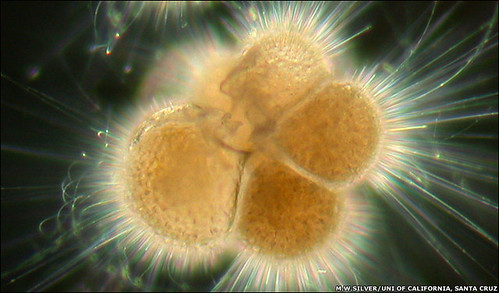Neoloboquadrina pachyderma, an amoeba Foraminifera that eats plankton in oceans' surface waters. The image was taken by a team that measured how much carbon sank below 500 meters in two regions of the Pacific Ocean. Writing in Science, they reported "striking differences" that could affect sequestration calculations.
Image: BBC News.
As long as you send images to me (and I hope it will be for forever), I shall continue to share them with my readership. My purpose for posting these images is to remind all of us of the grandeur of the natural world and that there is a world out there that is populated by millions of unique species. We are a part of this world whether we like it or not: we have a choice to either preserve these species or to destroy them in search of short-term monetary gains. But if we decide to destroy these other life forms, the least we can do is to know what we are destroying by learning that they exist. If you have a high-resolution digitized nature image (I prefer JPG format) that you'd like to share with your fellow readers, feel free to email it to me, along with information about the image and how you'd like it to be credited.
.


N. Pachyderma trivia:
Left coiling versions are dominant in warmer waters while right coiling versions are dominant in colder water.
Actually its a member of the Foraminifera, or chamber-bearers. The protist employs calcium carbonate to build its chambered shell. If you would like, I shall send you some foram tests, either modern ones from an eelgrass bed in the FL Keys or Cretaceous ones from the Bee Cave Marl member of the Walnut formation exposed on Loop 360 in Austin, TX just north of its intersection with FM 2244, Bee Cave Road.